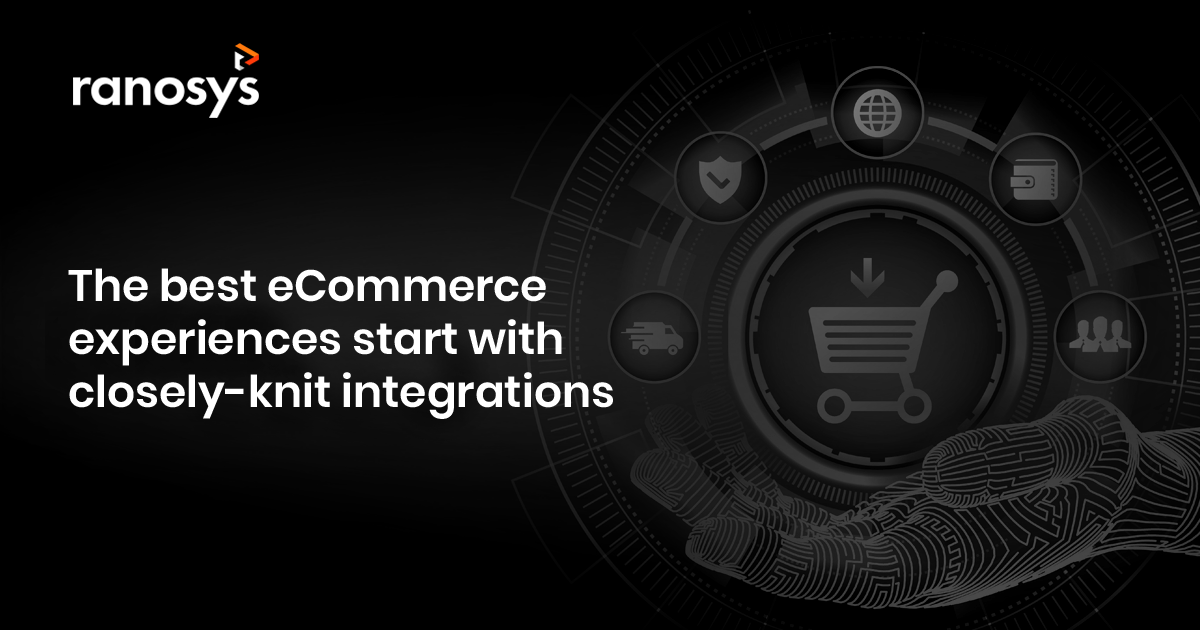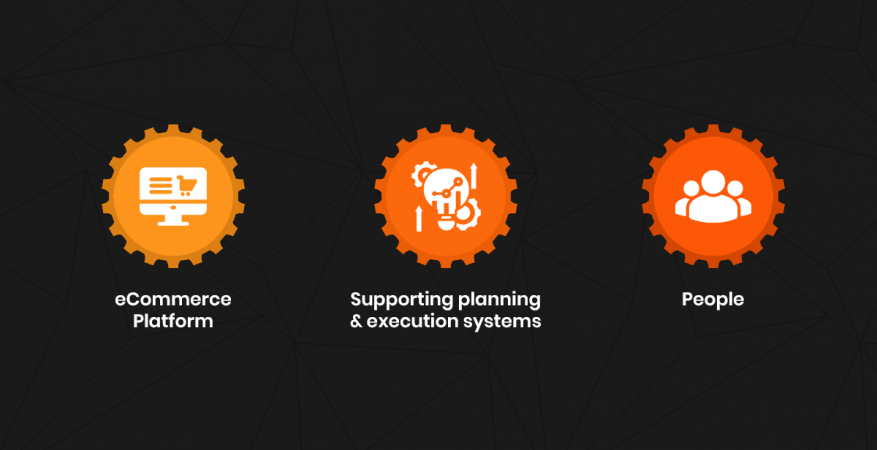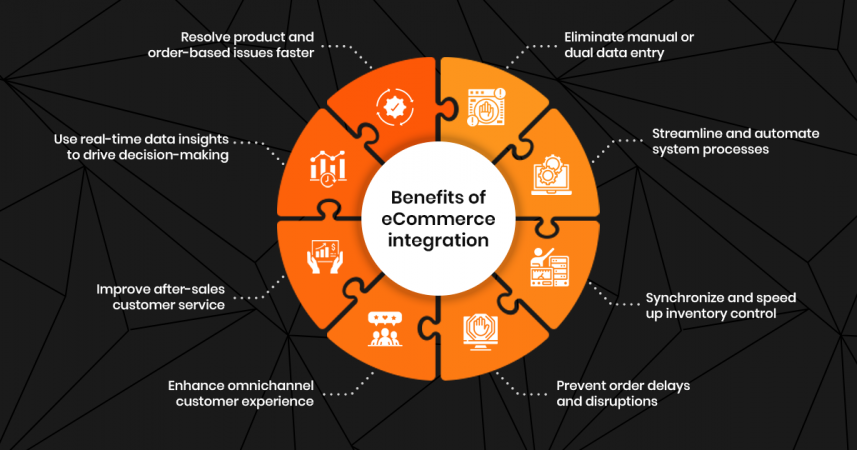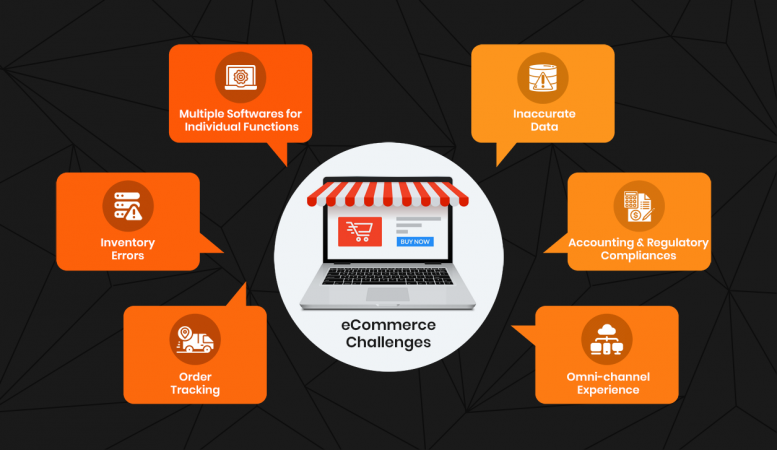The following are some benefits of integrated commerce solutions:
Benefit #1: Integrated commerce automates manual data entry
An fully-integrated eCommerce platform allows retailers and merchants to eliminate the manual and duplicated data entries. Since there is no need to input the same data into two different systems manually, the speed of data exchange increases astronomically. With data entered in a single integrated commerce system, any user can access and read this information, anywhere, any time, and from any device. Therefore, integration with backend information system in eCommerce reduces human involvement, manual errors, and redundant data entries.
Benefit #2: A fully-integrated eCommerce system streamlines operational processes
Cost-saving and efficiency has become critical for business sustainability. With commerce integration, you can easily automate back-end processes like online sales, inventory management, and order fulfillment. Moreover you empower customers to self-service their needs like order tracking, available inventory, delivery tracking, returns, etc. through omnichannel commerce integration. All such activities reduce operational costs and elevate customer satisfaction levels.
A seamless integration between your eCommerce platform (like Adobe Commerce, Salesforce Commerce Cloud, etc.) and an ERP system (like SAP and NetSuite) facilitates connection between the frontend and backend of your digital store, synchronizing every process- accounting, inventory, payment, shipping, and logistics to a single fully-integrated eCommerce system. It allows users to track every step of the process from any touchpoint and device, reducing order delays and ensuring timely deliveries.
Benefit #3: Easy inventory control with synchronized and speedy updates
When changes to an un-integrated eCommerce store are to be made manually, it becomes a time-consuming and tedious process. A rapid sync between every part of your integrated commerce system allows for timely updates and inventory control through bi-directional flow of information. Customer records can be updated instantly, which means if a customer cancels an order before its processed, the inventory data can be adjusted immediately, and the logistics team can be informed before the order is dispatched.
Benefit #4: Enhance omnichannel customer experience
A happy customer is an asset for a business, which is why omnichannel eCommerce integration becomes imperative. An integrated commerce system maintains up-to-date information of product inventory, price, quantity across several warehouses, available variations, etc. It also allows real-time order tracking, boosting customer satisfaction standards and fulfilling expectations speedily and seamlessly.
A fully-Integrated eCommerce system, especially when using an AI-personalized platform like SFCC, can provide real-time suggestions and recommendations based on a customer’s order history throughout their journeys. Even with marketing campaigns like online ads, emails, etc., with integrated commerce technology, you can adjust activities based on user location and profile.
Benefit #5: Improved after-sales customer service
With a single unified, easily accessible, and fully-integrated eCommerce system, you can handle and solve issues that might arise during a customer’s journey. With an integrated commerce-CRM unit, you can manage RMA requests and other after-sales services. All in all, omnichannel eCommerce integration allows you to service customer needs quickly and efficiently while reducing the stress that comes from the need of ensuring positive post-sales customer engagement.
Benefit #6: The power of data-driven business functions
Undeniably, customer data is a goldmine for commerce brands. However, to gain insights from this raw data, you need to ensure its safety, easy mining through multiple applications, and seamless implementation to existing operations. With a fully-integrated eCommerce system, you can easily study all kinds of data- financial data, consumer data, product data, inventory data and make intelligent and future-driven business decisions faster. Integrated commerce technology boosts your business’ productivity more than you can imagine via data adoption and automation.
Benefit #7: Resolve product and order-based issues via a fully-integrated eCommerce system
Another added advantage of a fully-integrated eCommerce platform is its ability to add issues cases to the order. This saves the customer service reps from the hassle and time associated with having to call the customer in case of service request. Instead, they can view the case in a minute by logging in their account and connecting the use case to the right order. This helps them gain a holistic 360-degree view of all your relevant customer and product information, increasing process efficiency and saving time.
Challenges to an fully-integrated commerce network
Your website functions as a conduit between your brand and your customers. Products, services, and solutions that add value to your customers’ online journey and omnichannel experience always grab the front seat. And a fully-integrated eCommerce platform is one way to ensure that all your actions point to the right direction, the right customers, across the right breakpoints and devices, at the right time.








